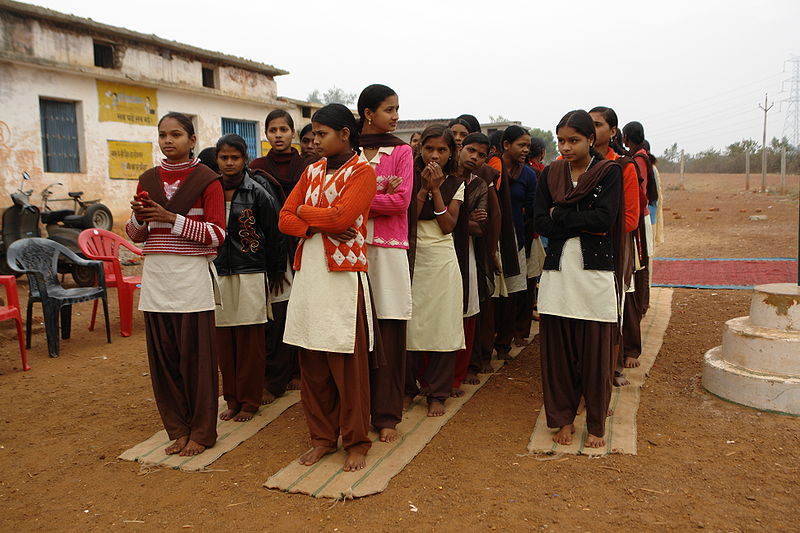Despite a slew of government schemes aimed to promote menstrual hygiene among women and adolescent girls, use of sanitary napkins is still sparse in large swathes of India, various studies show.
The Menstrual Hygiene Scheme (MHS) to provide subsidized sanitary napkins was launched by the health ministry in 2011. It was aimed to reach 15 million girls aged 10 to 19 and in 152 districts across 20 states. However, the scheme has been plagued by procurement issues, high costs, lack of knowledge and lack of disposal facilities.
An evaluation of MHS done by Chandigarh’s Postgraduate Institute of Medical Education and Research published in International Journal of Community Medicine and Public Health in 2016 shows that even after several years of its launch, the scheme couldn’t become popular due to irregular supply of sanitary napkins.
According to the plan, in 107 districts, sanitary napkins were to be supplied by the government and in the remaining 45 districts, self-help groups were to make and sell them. Procurement of sanitary napkins, by either of the above methods, must be at a fixed price of Rs7.50 per pack of six sanitary napkins.
The sanitary napkins branded Freedays are sold at Rs6 per pack of six napkins by Accredited Social Health Activists (ASHAs). ASHA retains Re1 per pack as incentive, and gets a free pack of Freedays every month. The balance Rs5 is to be deposited in the state/district treasury. The scheme took off in 107 districts.
The study found that 80% adolescent girls were aware about sanitary napkins but only 30% have actually used them.
“As the supply was irregular and inadequate, financial problem has emerged as a main hurdle for using Freedays. ASHAs involved in napkin distribution were not satisfied with the supply and subsidy given to them,” author Sudip Bhattacharya wrote in the study.
“As the supply is irregular from higher level, the villagers were ignorant about the disposal of Freedays without any dustbins for the product. The MHS has ignored the opportunity cost involved. Flow of supply is a critical determinant for implementation, success and sustainability of any programme,” he said.
Despite the involvement of the ministries of health, women and child development, drinking water and sanitation and human resource development, the situation has remained grim in rural areas.
The ministry of drinking water and sanitation issued Menstrual Hygiene Management National Guidelines in December 2015. The guidelines cover the aspects of providing adolescent girls with menstrual hygiene management choices and menstruation hygiene management infrastructure in schools and the safe disposal of menstrual waste.
Similarly, under the Rashtriya Madhyamik Shiksha Abhiyan, a centrally sponsored scheme under the Union ministry of human resource development, apart from providing separate toilets, sanitary pads are provided in schools and girls hostels. Further, the National Council of Educational Research and Training syllabus on health and physical education for Classes I-XII provides adequate space to menstrual hygiene in school. Despite being a part of school education, the awareness about sanitary napkins is minimal. According to the government, sanitary pad vending machines and napkin incinerators have already been installed in 40 Kendriya Vidyalayas.
“Schemes are many but the ground level implementation is a challenge. Being politically driven, they always lag behind as change of governments,” said Jugal Kishore, director and head, department of community medicine at Delhi’s Safdarjung Hospital.
“The issue of menstrual hygiene has been picked up by several ministries and departments. Thinking that some other ministry or department will take care of it, no single department pays much attention to it, making the schemes suffer,” a health ministry official said on condition of anonymity.
The government has also faced fire for goods and service tax (GST) on sanitary napkins, while several other items are kept out of it.
According to a 2016 study by the Indian Council of Medical Research (ICMR) in the national capital, the majority of adolescent girls (84%) and mothers of adolescent girls (92.9%) were using cloth during menstruation, which they were reusing, after washing it.
Though the washing of the cloth was being done at a clean place by the majority of the respondents, only 61.6% adolescent girls and 45.6% mothers of adolescent girls were drying the cloth under the sun. Only 40% adolescent girls had access to toilet facilities. About 37.8% unmarried adolescent girls reported about vaginal discharge accompanied with itching (21.6 %) and foul smell (27.5%).
As per health ministry data, only 12% of India’s 355 million women use sanitary napkins. Over 88% of women resort to alternatives such as un-sanitized cloth, ashes and husk sand. Incidents of reproductive tract infection (RTI) are 70% more common among these women. The biggest barrier to using a sanitary napkin is affordability. Around 70% of women in India say their family can’t afford to buy them, while 88% of women use old fabric, rags or sand to manage their flow.
“If the product is manufactured by micro enterprises, there will be huge increase in the availability of the product, hence consumer base will be enhanced to increase the market size in India. Hence, this should be considered as normal commodity so we can assume that there is high correlation price and quantity demanded,” stated a study published in theInternational Research Journal of Social Sciences done by department of economics, Galgotias University in Greater Noida titled Scope and Opportunities for Menstrual Health and Hygiene Products in India.
“With the above case of production, there is scope of high reduction in prices that will surely boost the quantity demanded of the product, which will provide high positive externalities on women menstrual health,” the study said.
(Livemint)
Thank you for reading the story until the very end. We appreciate the time you have given us. In addition, your thoughts and inputs will genuinely make a difference to us. Please do drop in a line and help us do better.
Regards,
The CSR Journal Team
Subscribe

